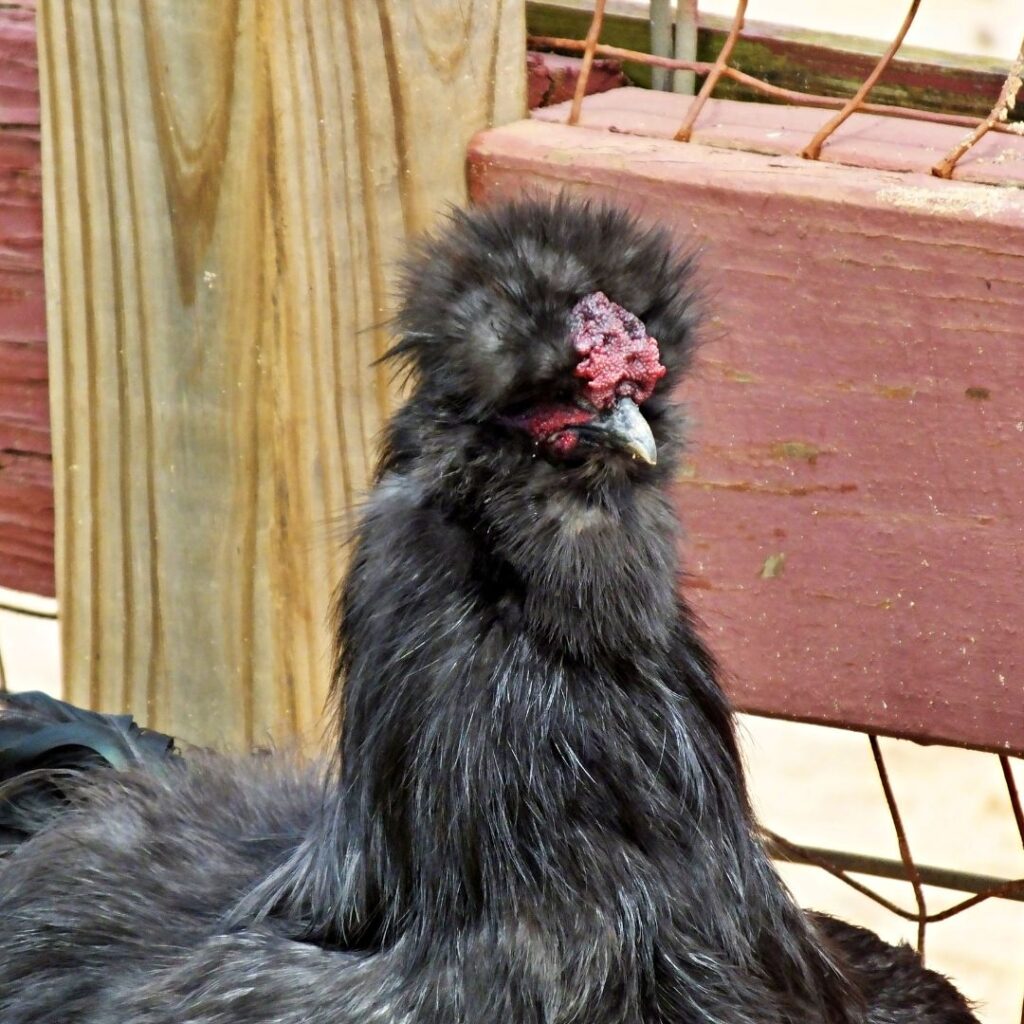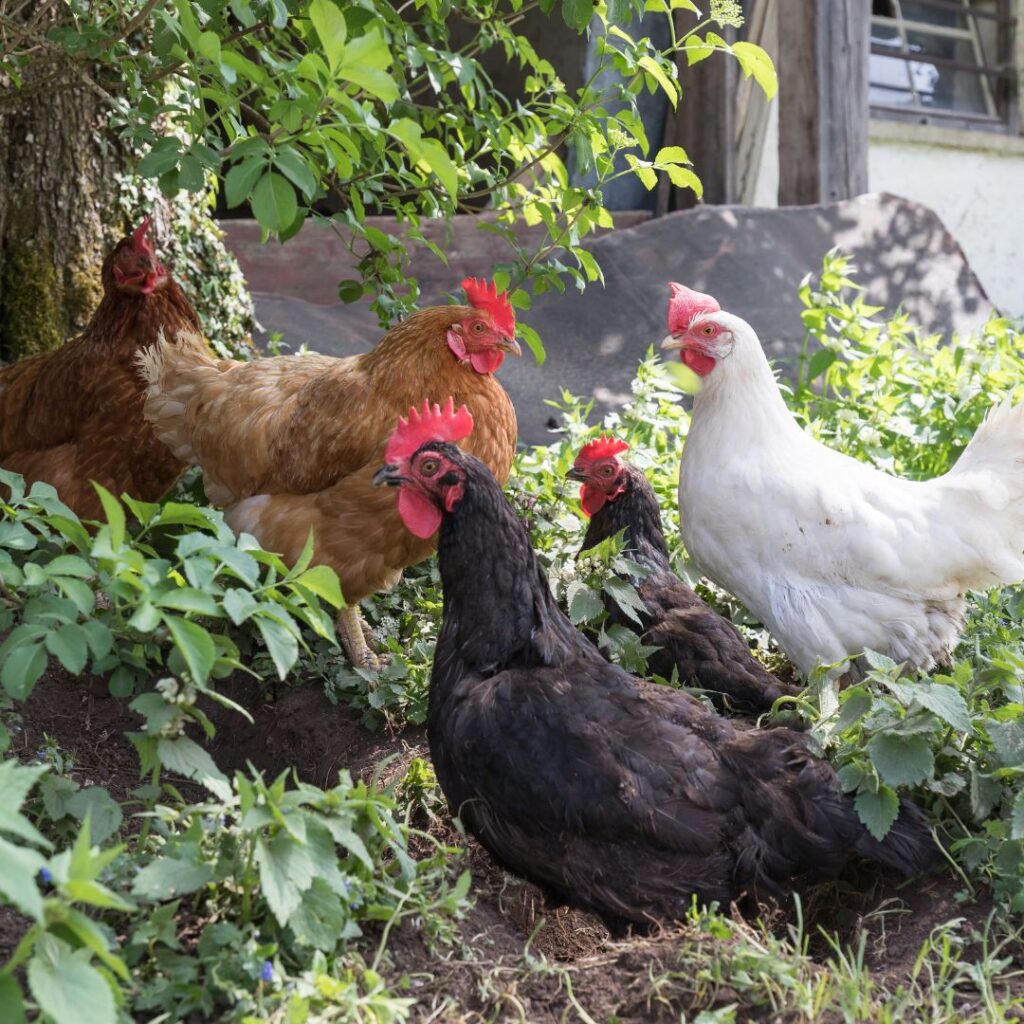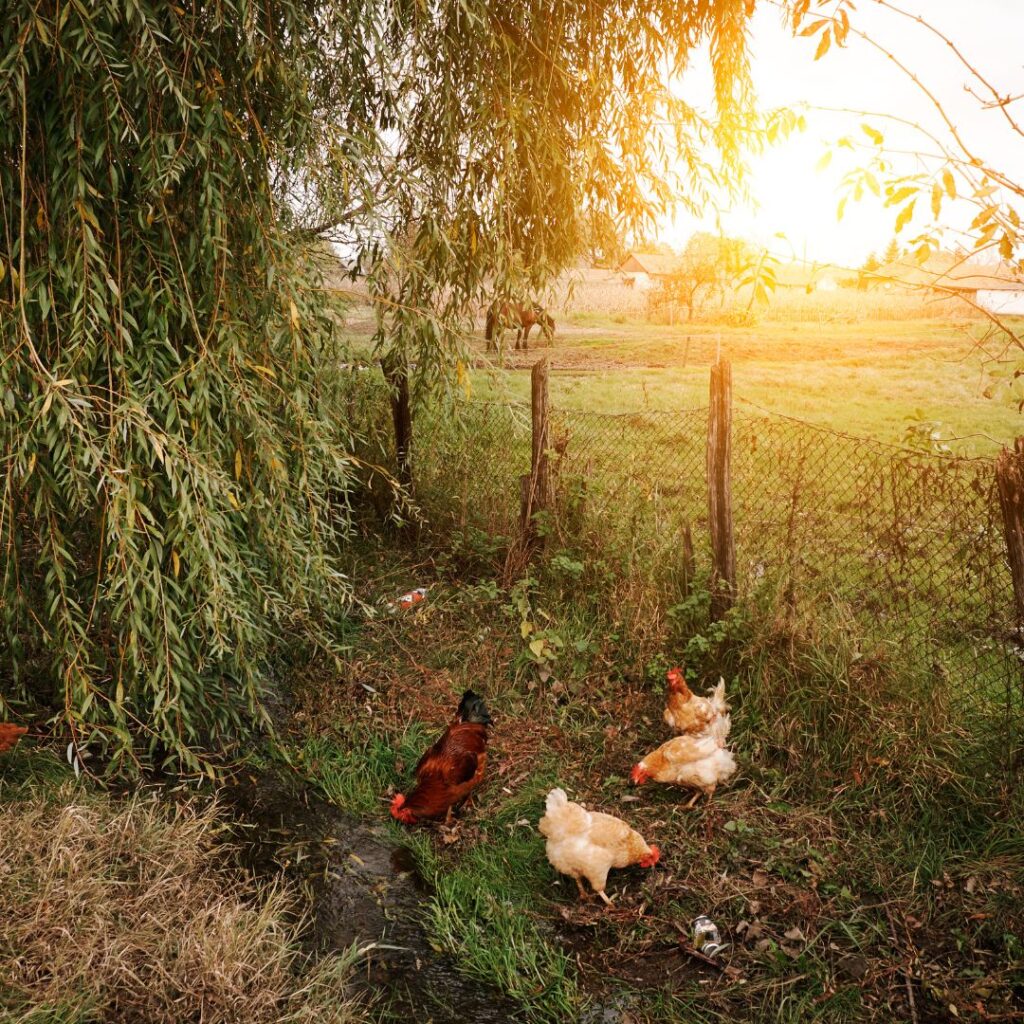Chicken Scratch and All You Ever Wanted To Know. Raising backyard chickens has become a popular pastime for many, and one key aspect of keeping our feathered friends happy and healthy is understanding their dietary needs.
Chicken scratch, a blend of seeds and grains, is often considered a staple in their diet. But is it the best option for your flock?
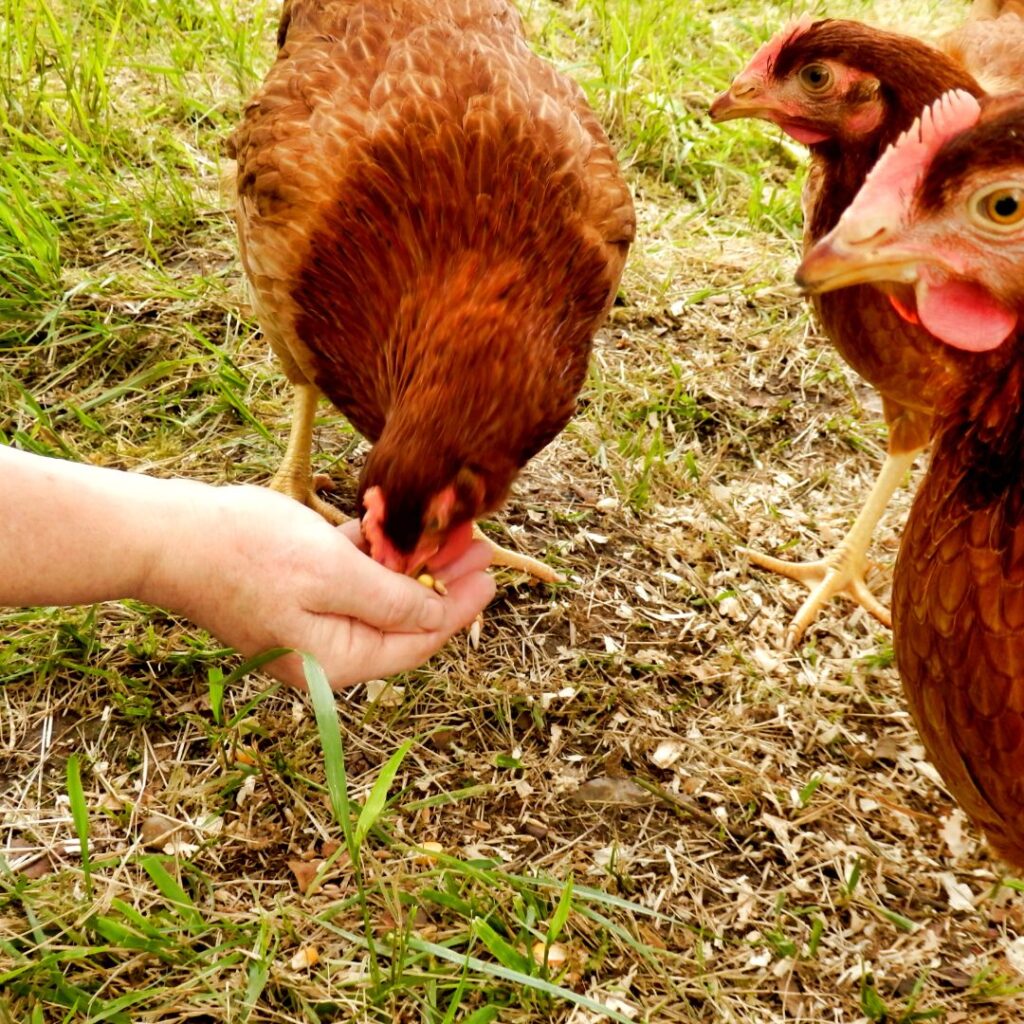
In this article, we’ll delve into the world of chicken scratch, its composition, benefits, and potential drawbacks. We’ll also explore alternative treats and tips for creating your own custom mix.
Short Summary
- Chicken scratch is a mix of grains, seeds, and corn with varying nutritional value.
- It should not replace nutritionally balanced chicken feed and should be given in limited portions to ensure health and well-being.
- Alternative treats such as kitchen scraps, insects, and worms can also provide additional nutrition when fed in moderation.
Understanding Chicken Scratch
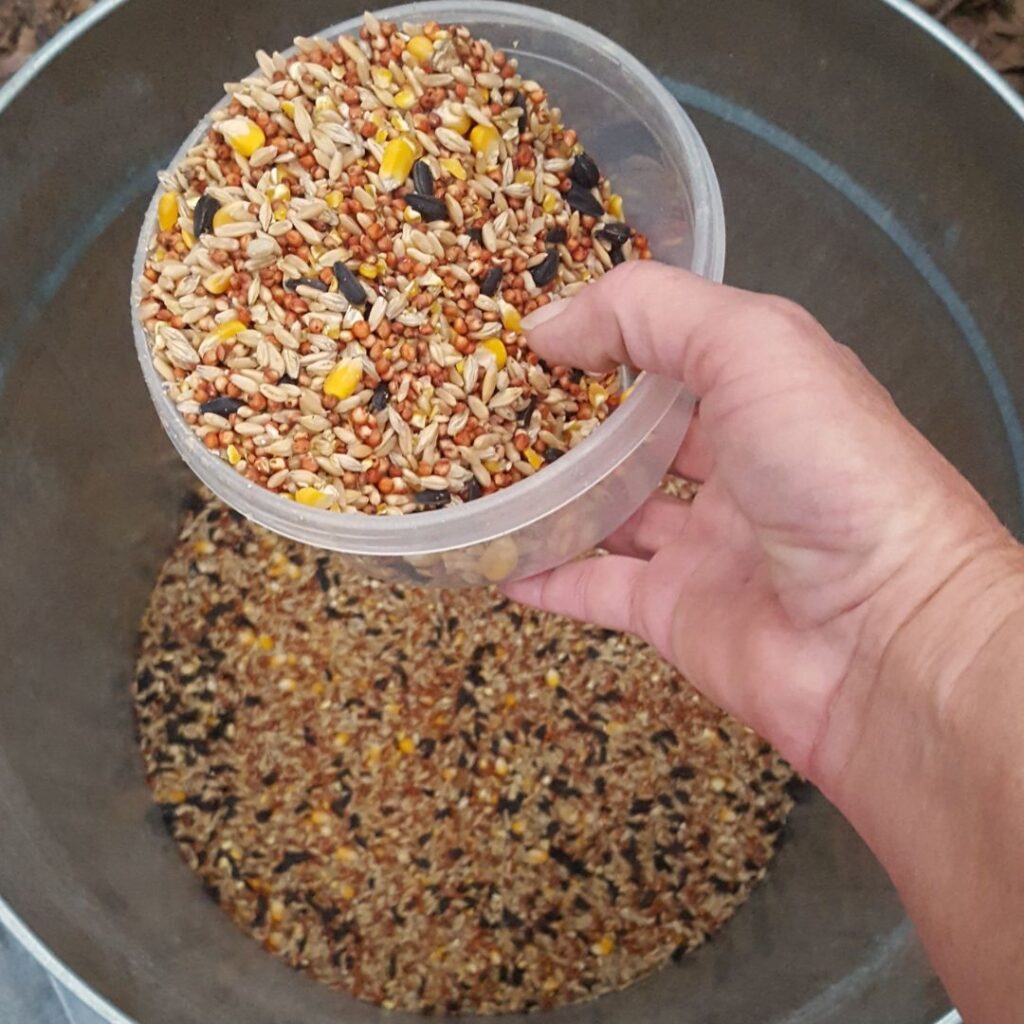
Chicken scratch is a mixture of whole grains, seeds, and cracked corn that chickens find palatable. It originated from farmers’ wives casting away excess or older seeds from a harvest, along with small kitchen scraps.
Although it may seem like a natural choice for feeding your backyard chickens, it’s crucial to remember that chicken scratch is not a nutritionally balanced diet like regular chicken feed. Instead, it is more of a treat or an appetizer for your flock.
Feeding chicken scratch in moderation can be beneficial, as it serves as a source of amusement for the chickens and can be used for training and managing the flock.
However, there has been some controversy surrounding the decision to feed chickens corn, particularly when it comes to feeding scratch grains, due to rumors of increasing body temperature and leading to obesity.
It is important to debunk these misconceptions and understand the role of chicken scratch in a balanced diet for your flock.
Composition of Chicken Scratch
Chicken scratch, also called scratch grains, typically comprises a mix of whole grains, seeds, and occasionally corn, though the composition may vary. Common components include:
- Cracked or rolled corn
- Barley
- Oats
- Wheat
- Sunflower seeds
- Milo
- Millet
- Scratch grain (incorporated without making extra assumptions)
These ingredients are often used in a mixture to create a birdseed blend. Chicken scratch contains approximately half the protein compared to regular layer feed, which is a significant factor to consider when planning your flock’s nutritional needs.
The composition of chicken scratch can influence its nutritional value and the overall health of your chickens. For instance, using organic scratch grains or opting for a mix that excludes corn can help create a healthier treat for your flock.
Understanding the ingredients in your chicken scratch mix is essential to ensure that it aligns with your flock’s dietary requirements and preferences.
Treat vs. Nutrition

While chicken scratch can be a fun treat for your chickens, it should not be relied upon for their nutritional needs. A nutritionally balanced diet of protein, calcium, fat, and fiber is recommended for chickens. Feeding scratch grains should be done in moderation and as a treat.
Over-reliance on chicken scratch can lead to vitamin and mineral deficiencies, impacting egg-laying abilities and overall health.
To ensure a healthy flock, it’s crucial to provide a properly balanced diet, such as layer pellets, alongside the occasional treat of chicken scratch. This way, your chickens can enjoy the fun of foraging for scratch grains without compromising their nutritional needs.
Comparing Chicken Scratch and Chicken Feed
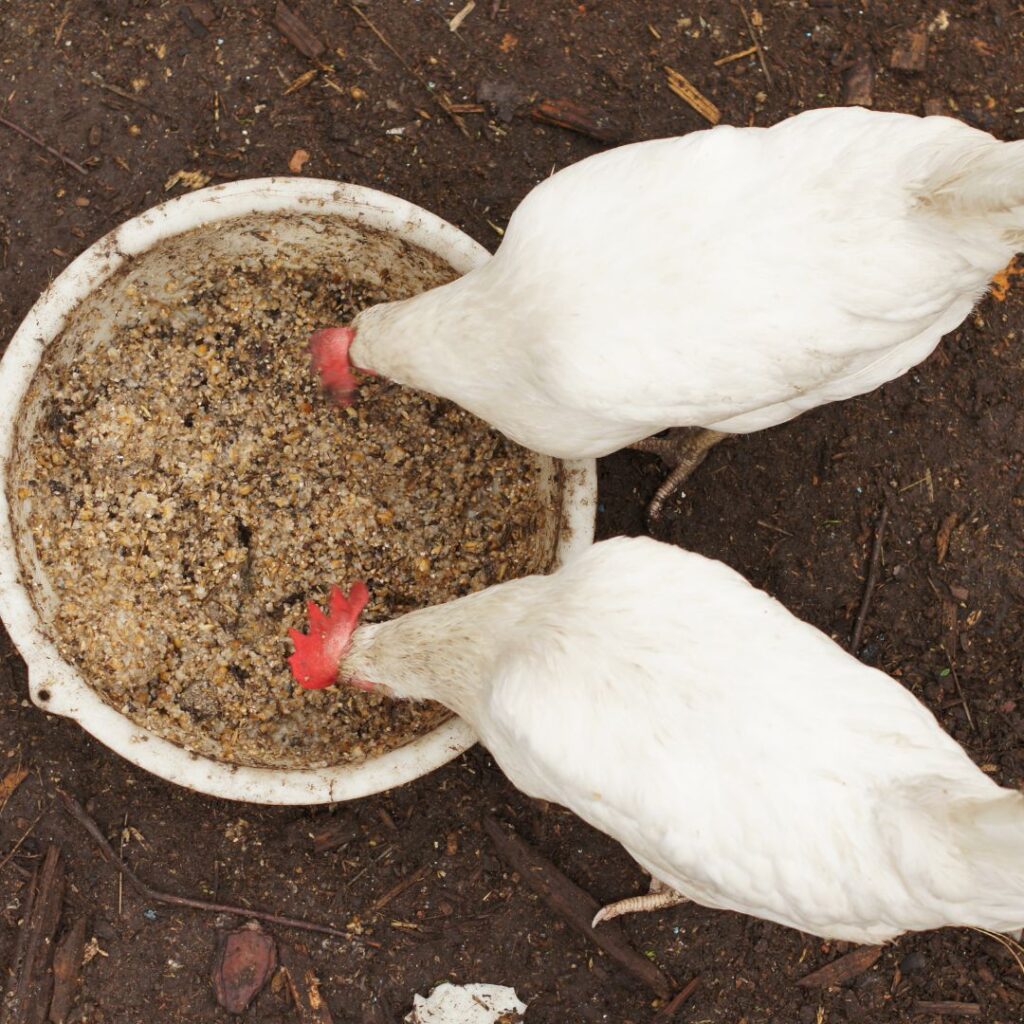
As mentioned earlier, chicken scratch is not a substitute for chicken feed, specifically formulated to provide balanced nutrition for different stages of a chicken’s life.
Chicken feed is available in various types, including layer feed for laying hens, starter feed for young chicks, and grower feed for growing pullets. Each type is designed to meet the specific nutritional requirements of chickens at different stages of their lives.
Feeding your chickens a balanced diet of the appropriate chicken feed is essential for maintaining their overall health and productivity. While chicken scratch can be an enjoyable treat, it should never replace the nutritionally balanced chicken feed your flock requires for optimal health and growth.
Layer Feed
Layer feed is designed for laying hens, providing the necessary nutrients for egg production and overall health. It typically contains more calcium carbonate, essential for strong eggshells, and is enriched with vitamins and minerals required for a healthy flock.
Feeding your laying hens layer feed ensures they receive the right balance of nutrients, leading to higher egg production rates and better overall health. While it may be tempting to provide chicken scratch as a treat, remember that it does not contain the same level of nutrition as layer feed and should be fed in moderation.
Starter and Grower Feed
Starter and grower feeds are formulated for young chicks and growing pullets, ensuring proper growth and development. Chick starter feed is specifically formulated to meet the nutritional requirements of young chicks, promoting their healthy growth and development.
Grower feed, on the other hand, is designed for the transition period between chick and layer or broiler feed. These specialized feeds contain the appropriate levels of protein, vitamins, and minerals needed for each stage of a chicken’s life.
Providing the right feed for your flock is crucial for maintaining their overall health and ensuring they reach their full potential, whether for egg production or meat production.
Feeding Guidelines for Chicken Scratch
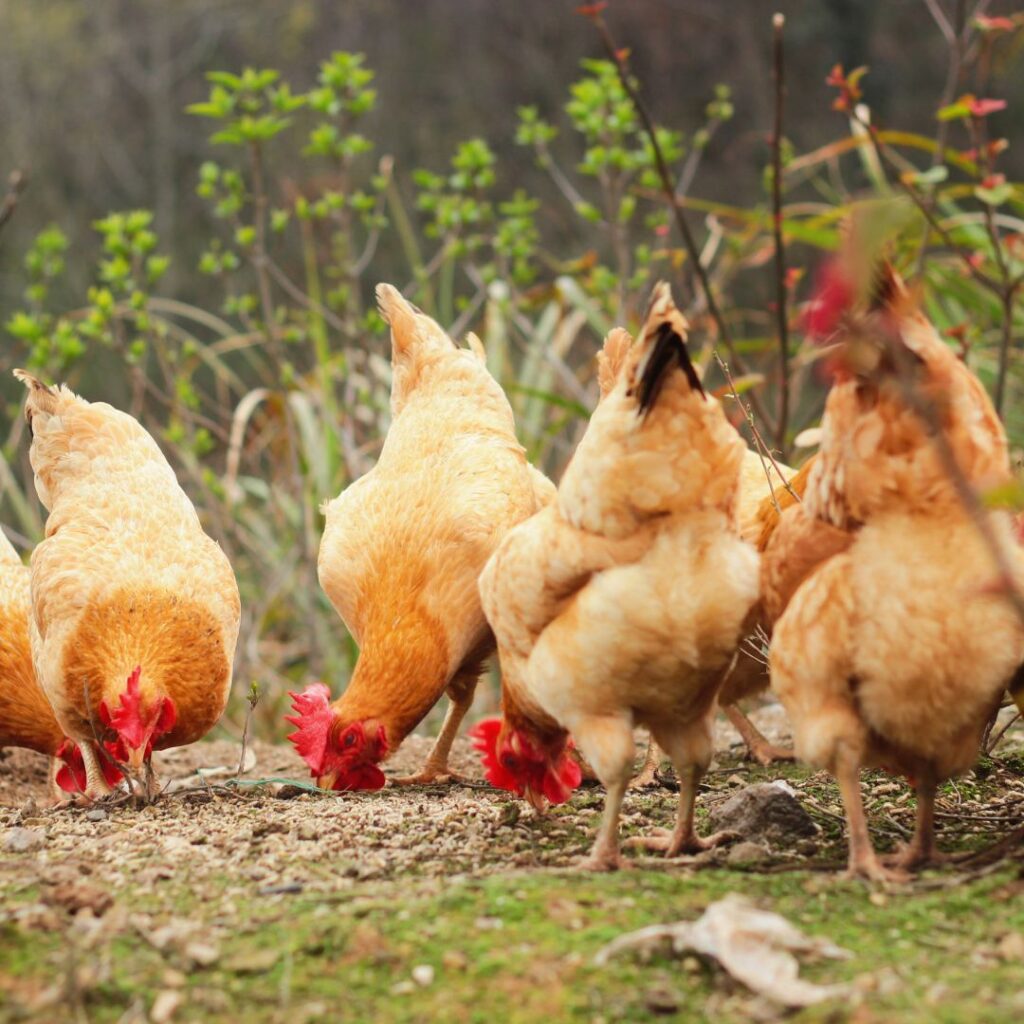
Following guidelines to avoid overfeeding and potential health issues is essential when feeding chicken scratch.
Chicken scratch should make up no more than 10% of a chicken’s daily food intake, and it is recommended that 2.4 teaspoons of chicken scratch be given per hen.
In addition to portion sizes, the timing of feeding chicken scratch plays a role in the overall health of your flock. The best time to feed chicken scratch is occasionally, preferably in the evening, as a reward or for training.
Following these guidelines assures that your chickens enjoy chicken scratch without compromising their nutritional needs.
Can Baby Chicks Have Chicken Scratch
Baby chicks should not be given chicken scratch, as they require specialized starter feed for proper growth. Introducing chicken scratch to their diet at an earlier age is considered premature, and it is recommended that baby chicks should not be fed chicken scratch until they are at least five or six weeks old.
Feeding your baby chicks the appropriate starter feed will guarantee they receive the necessary nutrients for their growth and development. Once they reach the appropriate age, you can gradually introduce chicken scratch as a treat but always remember to maintain a balanced diet with the correct chicken feed.
Portion Sizes
Controlling portion sizes when feeding chicken scratch is essential for maintaining your flock’s health. As mentioned earlier, chicken scratch should make up no more than 10% of a chicken’s daily food intake. Overfeeding chicken scratch can lead to obesity, malnutrition, and other health issues.
To prevent these problems, monitoring your flock’s weight and adjusting portion sizes is essential. Providing a variety of foods and treats in their diet will ensure your chickens receive all the necessary nutrients while still enjoying the occasional treat of chicken scratch.
Frequency and Timing
Feeding chicken scratch occasionally and preferably in the evening has its benefits. One advantage is that it serves as a refreshing reward in ice cube trays.
Another reason is that it can provide heat during cold winter nights, as movement produces heat, which is essential for chickens in extreme climates.
By feeding chicken scratch at the right time and frequency, you can ensure that your chickens receive the enjoyment and benefits of this treat without compromising their overall health and nutritional needs.
Benefits and Drawbacks of Feeding Chicken Scratch
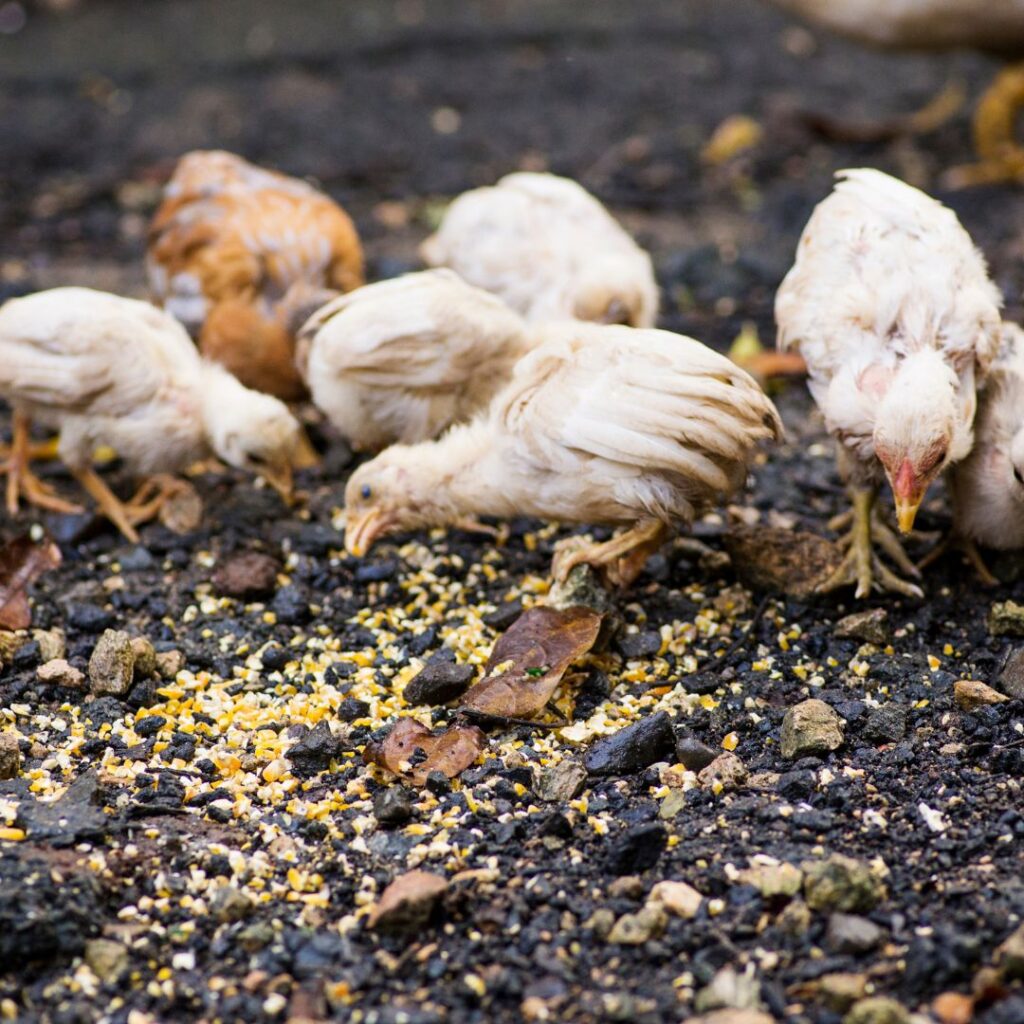
Feeding chicken scratch has both benefits and drawbacks, depending on how it’s used and the overall diet of the chickens.
On the one hand, chicken scratch can provide a burst of energy, stimulate natural scratching behavior, supply vitamins and minerals, and be used as an occasional reward for chickens. On the other hand, overfeeding chicken scratch may result in obesity, malnutrition, and other health issues.
Understanding the potential pros and cons of feeding chicken scratch will help you make informed decisions about your flock’s diet.
By feeding chicken scratch in moderation and providing a nutritionally balanced diet, you can ensure the health and happiness of your backyard chickens.
Positive Effects
Chicken scratch can serve several positive purposes for your chickens. It can provide energy, especially during cold weather, when foraging opportunities are restricted. Additionally, it helps stimulate natural scratching behavior by encouraging chickens to:
- Scratch and forage for food
- Exercise their leg muscles
- Keep their beaks and nails in good condition
- Prevent boredom and reduce stress
This behavior is akin to their behavior in the wild and promotes chickens’ healthy activities, ensuring overall health and well-being for your chickens.
Chicken scratch can also serve as a training tool, helping you manage your flock and establish routines. By using chicken scratch as a reward, you can teach your chickens to come when called, enter the coop at night, or even perform simple tricks.
When used appropriately, these benefits make chicken scratch a valuable addition to your flock’s diet.
Potential Risks
While chicken scratch has benefits, it also carries potential risks, especially when overfed. Excessive feeding of chicken scratch may result in malnutrition due to deficiency of essential nutrients or weight gain issues such as obesity without sufficient exercise.
Furthermore, leaving uneaten chicken scratch in the coop can attract pests and increase the risk of disease transmission.
To reduce these risks, it’s important to monitor your flock’s consumption of chicken scratch and adjust portion sizes as needed.
A balanced diet with various foods will guarantee that your chickens receive all the necessary nutrients while enjoying the occasional treat of chicken scratch. A well-planned chicken diet plays a crucial role in maintaining their overall health.
Alternative Treats for Chickens
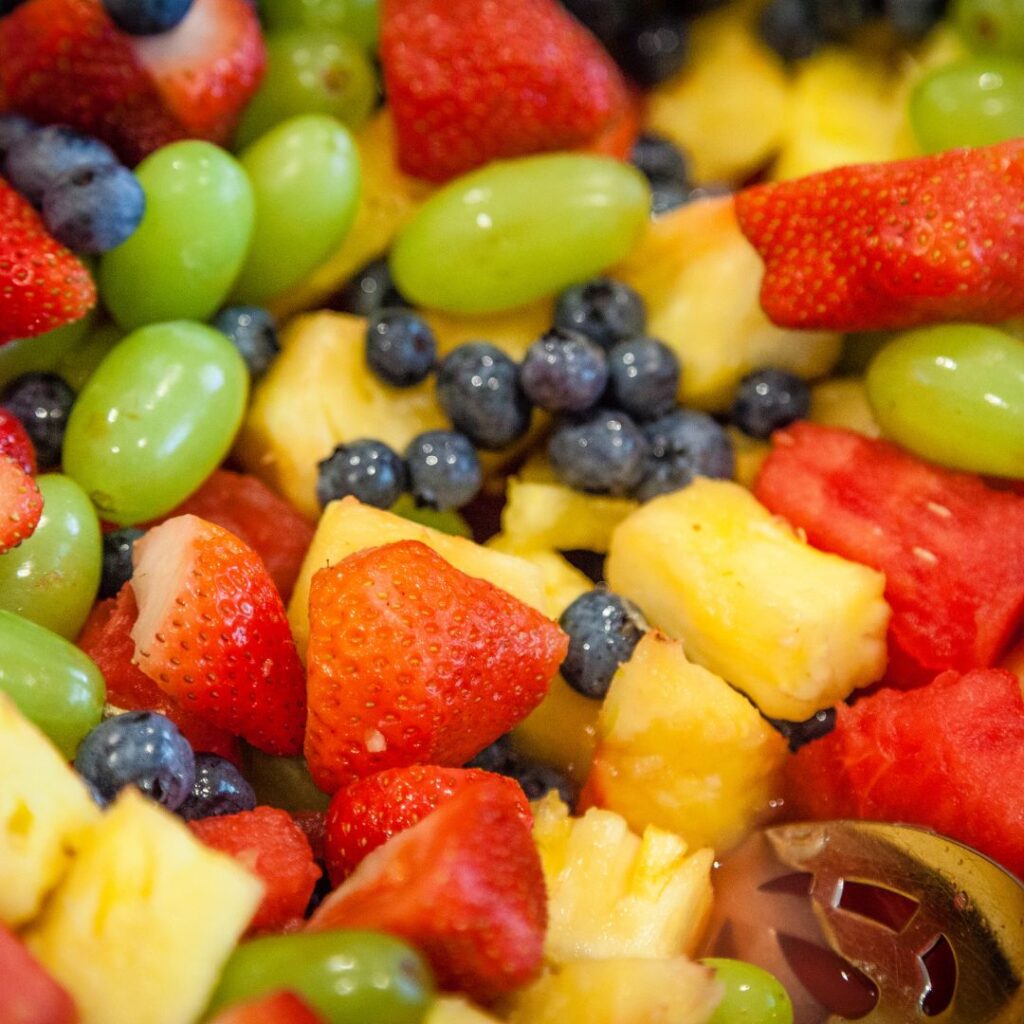
In addition to chicken scratch, several alternative treats for chickens can be used in place of or alongside it. Kitchen scraps and insects/worms can be employed as alternative treats for chickens, providing additional nutrition and stimulation for your flock while also helping to reduce food waste.
Exploring alternative treats for your chickens not only adds variety to their diet but also allows you to tailor their treats based on their nutritional needs and preferences. You can ensure a well-rounded diet that keeps your flock happy and healthy by incorporating a mix of chicken scratch and alternative treats.
Kitchen Scraps
Kitchen scraps, such as raw or cooked vegetables and fruits, can be a cost-effective and nutritious treat for chickens. Providing your flock with produce scraps reduces food waste and supplies them with additional vitamins and minerals essential for their health. (Comprehensive A-Z list of what chickens can eat)
When introducing kitchen scraps to your chickens, be mindful of portion sizes and ensure they are not replacing their regular feed. With a balanced approach, kitchen scraps can be a valuable addition to your flock’s diet.
Insects and Worms
Insects and worms, like mealworms and maggots, can provide protein and entertainment for chickens. These treats offer a source of protein and stimulate natural foraging behaviors, allowing your chickens to engage in activities similar to their wild counterparts without resorting to junk food.
When providing insects and worms to your chickens, source them from a reliable supplier to minimize the risk of parasites and bacteria.
As with all treats, feed insects and worms in moderation and supplement them with other sources of nutrition to ensure a healthy and balanced diet for your flock.
Making Your Own Chicken Scratch Mix
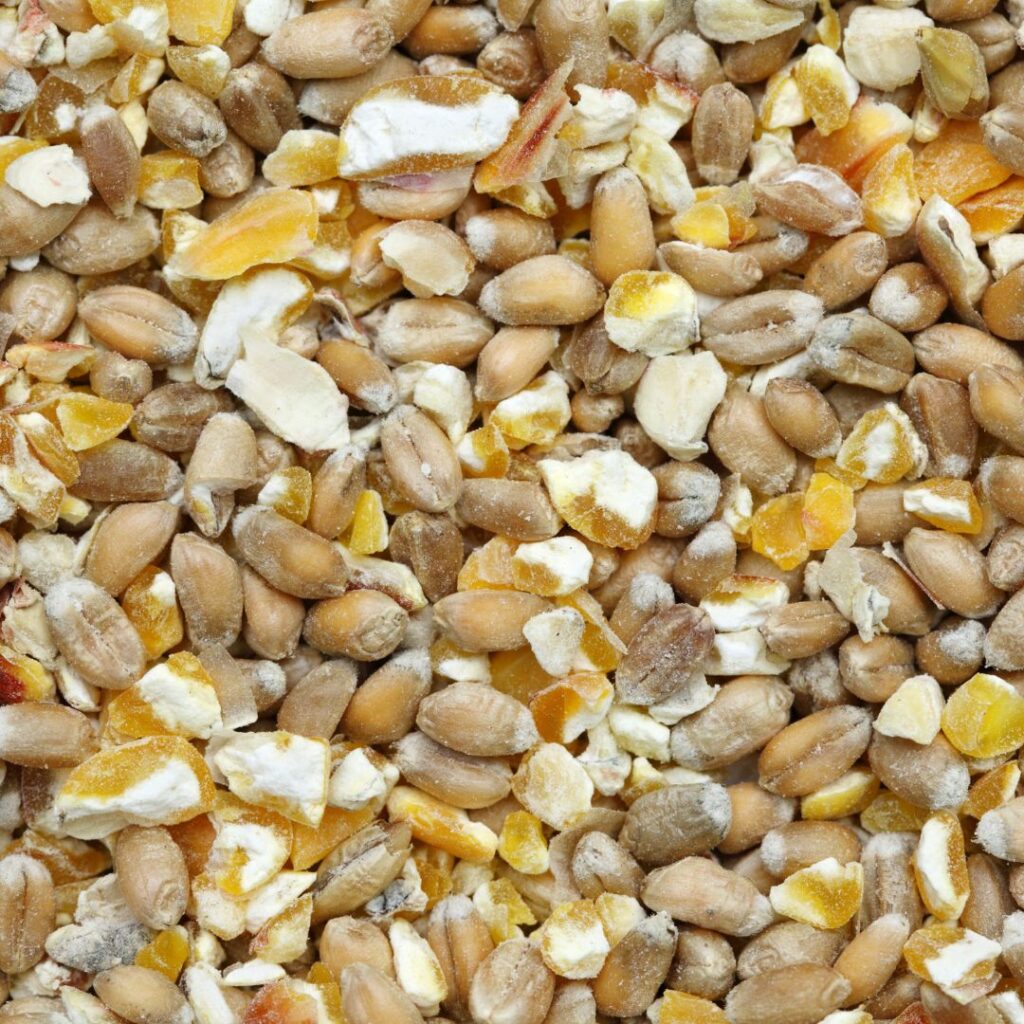
Making your own scratch grain mix allows for customization and control over the ingredients used, including the option to feed scratch grains.
By selecting grains, seeds, and other components based on your flock’s preferences and nutritional needs, you can create a personalized treat that keeps your chickens happy and healthy.
Creating your own chicken scratch mix also allows you to experiment with different ingredients and combinations, tailoring the mix to suit your flock’s unique requirements.
Whether you opt for a classic mix of grains and seeds or incorporate additional healthful components like dried fruits and vegetables, homemade chicken scratch offers endless possibilities for treating your flock.
Ingredients to Include
When creating your own chicken scratch mix, consider including a variety of whole grains, seeds, and other nutritious ingredients.
Whole grains provide necessary vitamins, minerals, and fiber, while seeds offer an excellent source of protein and beneficial fats for chickens.
Other healthful components, such as dried fruits and vegetables, can supply your chickens with extra vitamins and minerals.
By carefully selecting the ingredients for your homemade chicken scratch mix, you can ensure a treat that is both enjoyable and beneficial for your flock.
Tips for Storage and Serving
Proper storage and serving homemade chicken scratch are essential for maintaining freshness and preventing overfeeding.
Store the mix in a cool, dry place, preferably in an airtight container, to protect it from pests and moisture. When serving chicken scratch to your flock, remember to feed it in moderation, ensuring it does not replace their regular feed.
Following these tips for storage and serving, you can be certain that your homemade chicken scratch mix remains fresh and nutritious for your flock. With creativity and attention to detail, you can create a custom treat that keeps your chickens happy and healthy.
Summary
In conclusion, chicken scratch can be a fun and entertaining treat for your backyard chickens when fed in moderation and alongside a balanced diet. Understanding the composition, benefits, and potential drawbacks of chicken scratch, exploring alternative treats and making your own mix, can help you provide the best nutrition for your flock.
You can ensure a happy, healthy, and thriving backyard chicken flock by taking a thoughtful approach to feeding chicken scratch and other treats.
Frequently Asked Questions
What exactly is chicken scratch?
Chicken scratch, also known as scratch grains or grain mix, is a type of chicken feed consisting of a mixture of whole grains, seeds, and legumes. It closely resembles bird seed and is often used as a treat for chickens, provided that it does not exceed 10% of their daily intake.
Scratch is a great way to supplement a chicken’s diet with various nutrients, vitamins, and minerals. It is also a great way to provide chickens with a tasty treat that they will enjoy. Additionally, it can help keep chickens healthy.
Should chickens eat scratch?
Scratch grains are an excellent treat for chickens and should make up only a small percentage of their diet. They are an inexpensive way to supplement your flock’s meals and provide extra nourishment.
However, they should not be used as your hens’ primary food due to their lack of balanced nutrition.
What is chicken scratch vs feed?
Chicken scratch and feed are different, as chicken scratch is a treat for chickens, usually composed of cracked corn and other grains. However, they should be consumed in moderation due to their high caloric content.
What is the proper portion size for chicken scratch?
A chicken’s daily intake of chicken scratch should be limited to 10% of its diet.
Can baby chicks eat chicken scratch?
Baby chicks should not be given chicken scratch, as they require specialized starter feed for proper growth rather than the general food given to adult chickens.
This starter feed is specially formulated to provide the necessary nutrients for a baby’s development, including protein, calcium, and vitamins. It is also easier for them to digest than the larger grains found in chicken scratch.

